Nuon (2000)
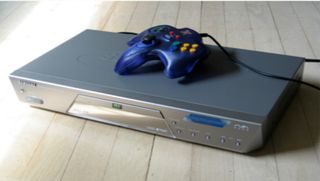
VM Labs' Nuon technology was a platform that effectively turned DVD players and digital set-top boxes into interactive, internet-capable media machines. No, it wasn't an out-and-out console, but it did put some games onto typically non-gaming devices. It was another novel attempt at that all-in-one dream so many tech companies had chased in the decades prior, but like most of the others, it never caught on.
Toshiba, Samsung, Motorola, and other manufacturers all released Nuon products featuring a miniscule selection of games and "enhanced" films in 2000 and 2001, but the Nuon tech made them more expensive than your everyday DVD players. Nuon's eight games included Tempest 3000 and nothing else worthwhile. The concept itself was questionable enough, but the PlayStation 2 and its DVD compatibility put the nail in Nuon's coffin just a year after its first devices launched. VM Labs filed for bankruptcy by the end of 2001, and Nuon as a whole was killed a few months later.
Panasonic Q (2001)
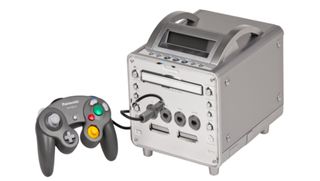
The Panasonic Q was a GameCube with a built-in DVD player. That was it. The PS2 and Xbox both had their own DVD drives, and Nintendo wanted to get in on the action. But instead of creating a redesigned GameCube itself, Nintendo had Panasonic manufacture one shortly after the original console launched.
The Q only launched in Japan. As with so many other failures in this article, it was just too expensive--a standard version cost $440, while a non-region locked edition cost $500. Since anyone could just get a regular GameCube and DVD player for less than that combined price, the Q had a hard time catching on. It was killed about two years after it launched.
Indrema L600 (N/A)
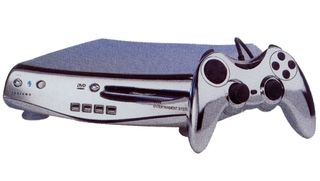
The Indrema L600 was one of a few ambitious consoles that never made it to market, but we mention it here because it would've run on Linux, and hence would've been the only open source console alive. That meant that ordinary users could write their own games and software for the system. We're guessing someone over at Ouya had heard of Indrema. Radical business model aside, the L600 was also set to play CDs and DVDs, have web browsing capabilities, and even sport a DVR for recording TV shows (hello, Xbox One). Its prototype had a slick-looking design, and the finished product was scheduled to launch in in mid-2001 for $300.
But as we've seen, machines that are "ahead of their time" usually don't end up doing well. Indrema was a small start-up, and it just couldn't raise enough funding to finish its dream machine. It's unlikely that the L600 would've succeeded against the big boys, and it's difficult to say whether Indrema would've been able to stick to its original vision, but we'll never know either way. The company folded in 2002, and the L600 went down as one of the more unfortunate pieces of gaming vaporware.
PSX (2003)
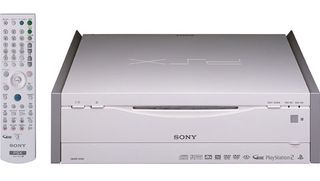
Not to be confusion with the original PlayStation, the PSX was Sony's attempt to take the popularity of the PlayStation 2 and channel it towards a new, multi-purpose multimedia machine. It had all the functionality of the PlayStation 2, but also added DVR capabilities, media editing software, and connectivity with the PSP. It was also the first machine to use Sony's XrossMediaBar interface, which can still be found in many Sony consumer products today.
Sign up to the 12DOVE Newsletter
Weekly digests, tales from the communities you love, and more
The PSX was never released outside of Japan, and it annoyingly didn't come with a DualShock 2 controller, but its biggest problem was its price. It launched at 79,800 yen in late 2003, which translates to about $800 in today's money. That's a lot no matter where you are, and although Sony would eventually slash its cost of entry, the PSX could never prove its worth to most consumers. The PS2 would go on to be the most popular console ever, but the PSX finished lightyears away from such success.
Nokia N-Gage (2003)
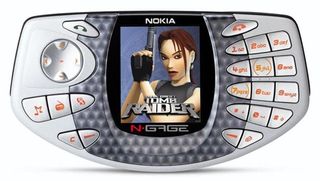
The N-Gage has become an industry punchline, but its core concept of blending a phone with a game console doesn't seem so dumb in our current iPhone-fied times. It had relatively impressive 3D graphics, online multiplayer capabilities, and some of those PDA-style functions that the Game.com promised years before. It even got big-time developers like EA, Activision, THQ and others to populate its games library. Some of those games were actually good.
It didn't matter. The big problem was the N-Gage's infamous, taco-shaped design, which was accommodating to neither game playing nor talking on the phone without looking like a psychopath. (Exhibit A.) The device cost $300 (plus monthly service fees), which would be cheap for a premium phone today but was way more expensive than the then-dominant Game Boy Advance. Its screen was tiny too, and it had less than 60 games overall. Simply changing those games required you to swap out the phone's battery altogether. Nokia released different versions of the N-Gage, and retailers lowered its price, but interest consistently remained low. Only a couple million units were sold overall, and N-Gage hardware was discontinued within a couple of years.
Tapwave Zodiac (2003)
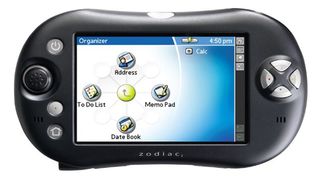
Devised by tech startup Tapwave, the Zodiac was yet another failed attempt at creating a game handheld/PDA hybrid in the early aughts. It was advertised as a powerful, multi-functional entertainment system for those on the go, and it ran on the then-popular Palm mobile OS. It was built nicely, easily supported emulators, and even got ports like Tony Hawk's Pro Skater 4 and Doom II onboard. It received some positive press in its earliest days too.
There were a few predictable reasons for the Zodiac's failure, though. For one, it was expensive--$300 for a 32 MB model and $400 for 128 MB model. When it did go on sale, its regional launches were restricted to particular retailers. The Zodiac was already obscure to the mainstream, and making CompUSA its exclusive US launch partner wasn't going to help change that (no offense, CompUSA). And finally, as youd expect, notable game developers wouldn't flock to a console that was selling in the thousands. The PSP and Nintendo DS were just taking off, and selling a game console to PDA enthusiasts (or whatever they were called) wasn't going to win that market either. The Zodiac sold abysmally, and was discontinued in mid-2005.
Infinium Labs Phantom (N/A)
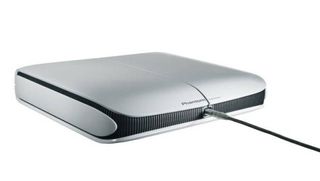
The Phantom's proposed vision was eerily similar to what our current future seems to hold. The machine would have been completely internet-based--read: always-on--and was said to be capable of playing all current and future PC games through direct downloads. It would reportedly be available through an upfront cost of $200 or a monthly fee of $30. Naturally, Infinium Labs claimed its online-centric ways would give publishers and developers more of their games' profits too.
You can see chunks of its ideas through current platforms like OnLive, but whether or not the Phantom could've really competed against the Xbox 360 or PlayStation 3 is really up in the air. The console was scheduled to be released in late 2004, but got repeatedly pushed back until mid-2006, when it "Phantom'd" for good. Like Indrema, Infinium Labs struggled to gain enough cash to bring the Phantom to market. It eventually lost millions in wasted Phantom development costs and publisher licensing agreements, and the company (now called Phantom Entertainment) stuck to making wireless keyboards soon afterwards. But given the response to Microsoft's recent online aspirations, we're a little skeptical this always-on machine would've ever risen beyond niche status anyways.
SSD Company XaviXPORT (2004)
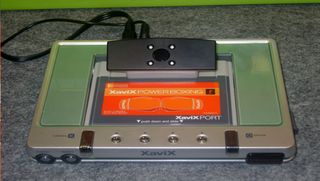
SSD Company's XaviXPORT was an odd quasi-precursor to the Wii in that it uses motion controls and had a software suite largely composed of fitness-based games. Instead of standard controllers, XaviXPORT games come with their own respective peripherals--XaviX Tennis came with a faux tennis racket, XaviX Bowling came with a pretend bowling ball, and Super XaviX Bros alright, we made that last one up. The tiny console's technology is weirdly outdated too--it still takes cartridges, each of which supply their own 8-bit multiprocessors.
SSD obviously isn't shooting for the moon with the XaviXPORT, so it probably wasn't ever meant to be anything more than a niche product. It launched for a relatively cheap $80, but given the primitive tech involved here and the fact that its few games still cost $50 each, it still required more cash than it was worth. Those prices have dropped considerably now, but the machine has never garnered much attention. Turns out actually going outside is still the best way to get in shape. However, we give it major props for getting Jackie Chan to use his likeness for games like Jackie Chan Studio Fitness Powerboxing. Yes, Jackie Chan. XaviXPORT. The gaming industry is a beautiful thing sometimes.
ZAPiT Game Wave (2005)
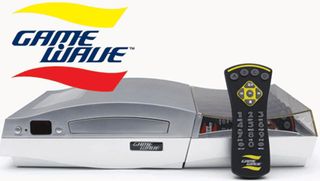
The ZAPiT Game Wave is another console hybrid that also functions as a DVD player. Its miniscule software lineup aimed to provide family-friendly entertainment through simplistic trivia or board-style games.
A casual party machine through and through, the Game Wave launched in late 2005 for $99 and predictably hasn't made much of an impact. Regular consoles seem to be working swell for group gatherings, so why the world needs a machine dedicated for such occasions isn't quite obvious.
Gizmondo (2005)
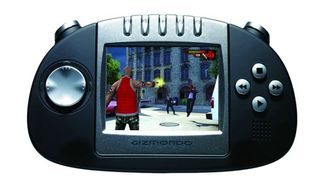
All hail the fail king. The Gizmondo actually had some nifty features like SMS texting, GPS navigation, a built-in camera, and MP3 and video playback for movies and music. It actually had some decent-looking hardware. Its games actually didn't look any worse than those on the PSP. And perhaps most importantly, Gizmondo actually knew how to use its money to create buzz.
But the handheld still failed. It failed so very hard. It was expensive, because of course it was--$400 at most, or $230 for an ad-supported unit that never received ad support. In America, the console's launch was limited to shopping mall kiosks. Its advertising campaign was virtually nonexistent. It had one game to its name when it launched in the UK; it was a reworked ZX Spectrum title. When the Gizmondo hit Stateside, it had eight titles. They weren't exactly must-haves, and developers weren't signing up anytime soon. And oh yeah, one of the dudes in charge of the company was a criminal from a Swedish mafia. That really didn't help. Gizmondo reportedly sold less than 30,000 units total, which is pathetic, and the company went bankrupt less than a year after the device's launch.
Most Popular

